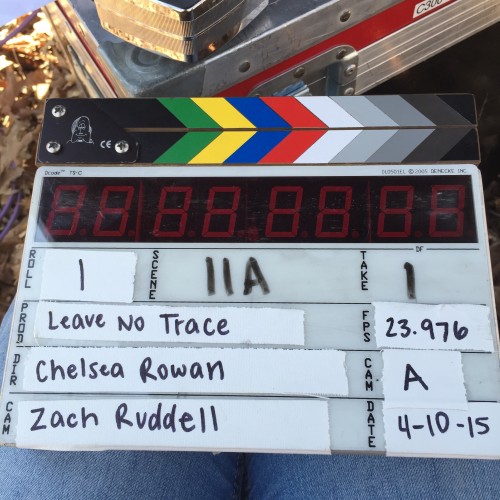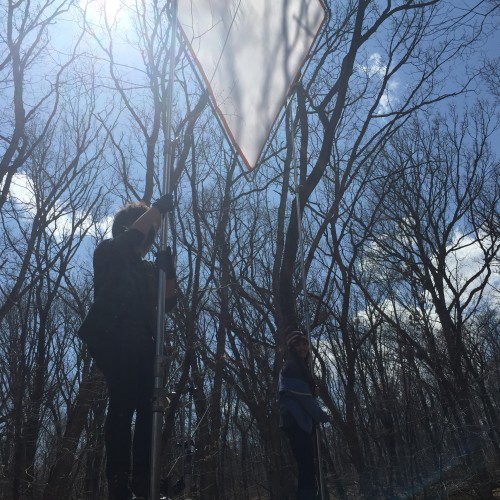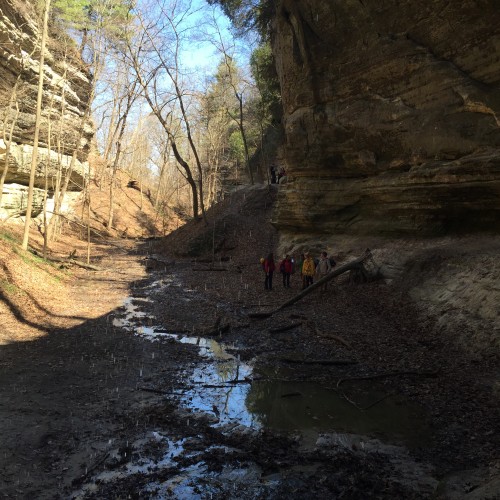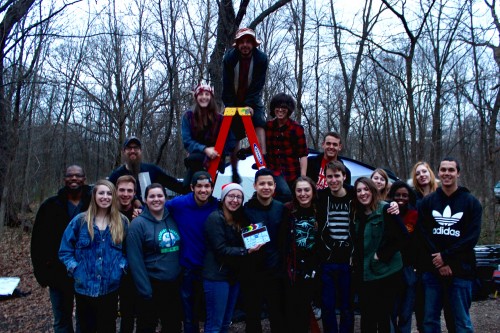
Shooting on Location: The Obstacles
My most recent creative endeavor is a short film called “Leave No Trace.” My producer, Kristopher Campa, acquired the rights to the story from a very talented author and comedian based out of New York City. The story: A young girl, recently graduated from high school, is frightened by what the future at her new college will hold. She attends a freshman orientation hiking trip at the urging of her mother, and must face an awkward hiking mantra, which eventually helps her to grasp the uncertainty of the future and the strength of her identity. The challenges to making any film are many, but when working with a script that is set in (ideally) the Colorado Mountains, student filmmakers from Chicago face a challenge that doesn’t seem surmountable. Continue reading to see the obstacles faced when shooting on location in the woods for a long weekend.
The script called for the film to be shot in the Rocky Mountains. This was our first obstacle, as the woods in and around Chicago have little resemblance to what you would find in Colorado. Normally, with a location as important as the Rocky Mountains, production companies would pay for the transportation of cast, crew, and equipment so the film could be shot where it was intended to be shot. As a student production, where our budgets come from our own pockets and fundraising, it often isn’t feasible to leave Chicago, let alone the state of Illinois, in order to film. That means the production needs to get creative. Multiple weekends were spent scouring Chicago’s Forest Preserves, and when we realized that the preserves were mainly flat (we needed at least some elevation), we decided to look outside of Chicago.
Having crew members filling the roles of location scout and location manager is a necessity to making any film. In the case of “Leave No Trace,” these roles were filled by Illinois natives. Why? It is important to tap the resources around you. My producer and I, not being from the Midwest, had very limited knowledge of the sorts of locations that might be available to us. When you have team members who live in the area you are looking to film in, they become essential to bringing the story to life. Our Unit Production Manager, Brayden Hogue, a native of Ottawa, Illinois, told us about Starved Rock State Park (along with many other forested areas in southern Illinois), which is where we ended up filming. While Starved Rock didn’t resemble the Rocky Mountains, it had character that the forest preserves lacked. It also had elevation, which Kris and I deemed absolutely necessary for our location.
Once the location was secured, more obstacles arose, most importantly the fact that Starved Rock was located close to two hours south of Chicago. When filming in Chicago, it is normal for cast and crew to find their own transportation to and from set, as most of the team members live within the city limits. When you decide to shoot two hours away from the city, providing transportation is a must. While providing transportation is important, finding suitable lodging for the cast and crew is also necessary. After a long, 12 hour day, it is daunting to imagine having to drive two hours back to Chicago, for a short nights rest, only to drive two hours back out to Starved Rock the next morning. My producer decided the only feasible option was to provide lodging, which can become extremely pricey, even with a crew as small as 25 people.
Lodging was another area that members of the team proved essential. One of the camera assistants, who knew Kris needed help finding reasonably priced lodging, offered the production to use her time-share in the area (only 30 minutes away from the park). Kris accepted and was able to house the entire crew for less than 10% of what it would have cost to put everyone up in a motel.
Now, on to the actual shooting itself. Starved Rock State Park is incredibly beautiful and scenic. It is also incredibly large. One of the main obstacles faced during the actual shooting days was the sheer size of the park, and moving cast, crew, and equipment from location to location. Our furthest location point was approximately 1 mile from our home base, where the gear truck was parked. We needed to transport camera, grip & electric equipment, and the bodies of our team to and from these locations on a daily basis. Scheduling, which is always important, became even more so, so that we weren’t traveling to and from locations multiple times, moving equipment back and forth, when it would be more effective to shoot each location until they were finished.
The obstacles discussed above all are things that every production runs into when shooting on location. There are even smaller issues that you might not realize until you are actually in the middle of the woods filming, such as trash bags to collect trash, having production assistants transport craft and catering on a regular basis to keep the crew happy, and then just having places for cast and crew to relax their legs in between takes. A good producer, like mine, will have thought of all of these obstacles and done everything in their power to solve the issues before they arise. When that is done, the cast and crew functions at its highest possible ability and effectiveness. Not to mention, when the production end runs smoothly, the technical end runs smoothly, and then everyone leaves set feeling satisfied and happy.
One of the best things about working on location with the same crew for 3 days was how close we became. My 1st AD told us in our production meeting before driving out to Starved Rock that we would be a big family by the end of the weekend, and he was right. Trekking through the woods and staying together in a big time-share, eating breakfast, lunch, and dinner together; these were all things that pulled us together. Even with all the obstacles listed above, “Leave No Trace” was one of the best sets I have ever worked on, and one of the best crews I ever worked with.




